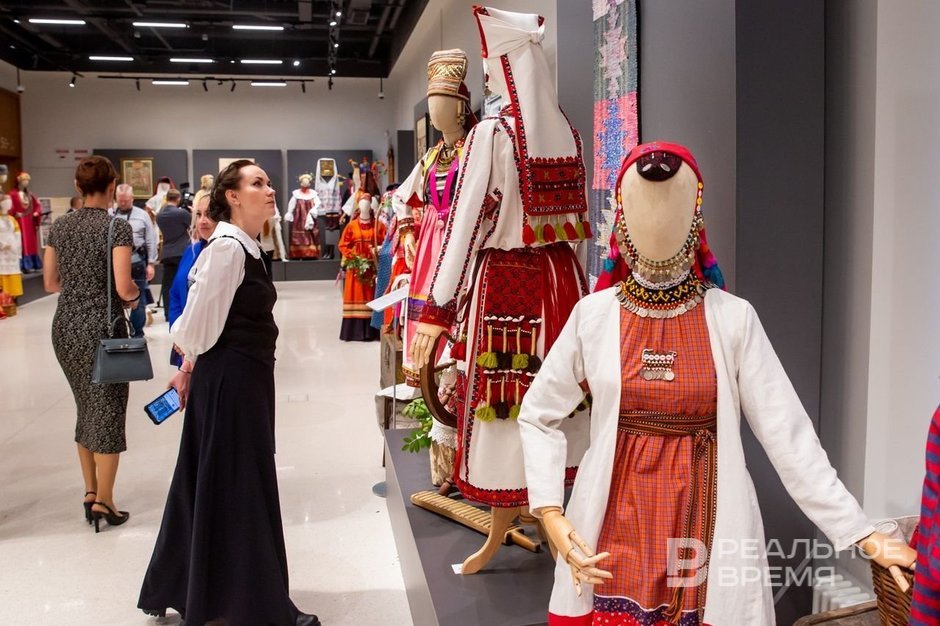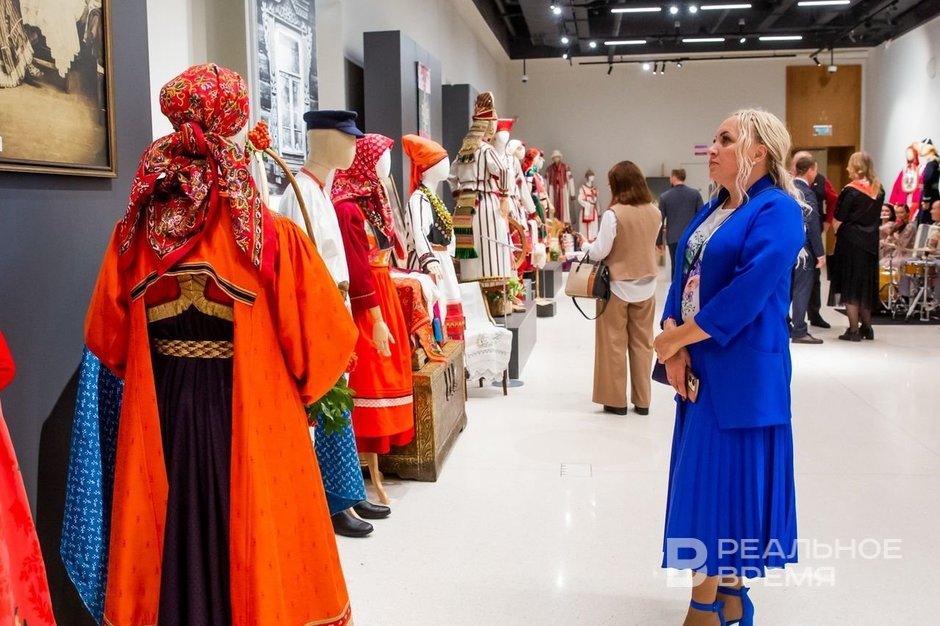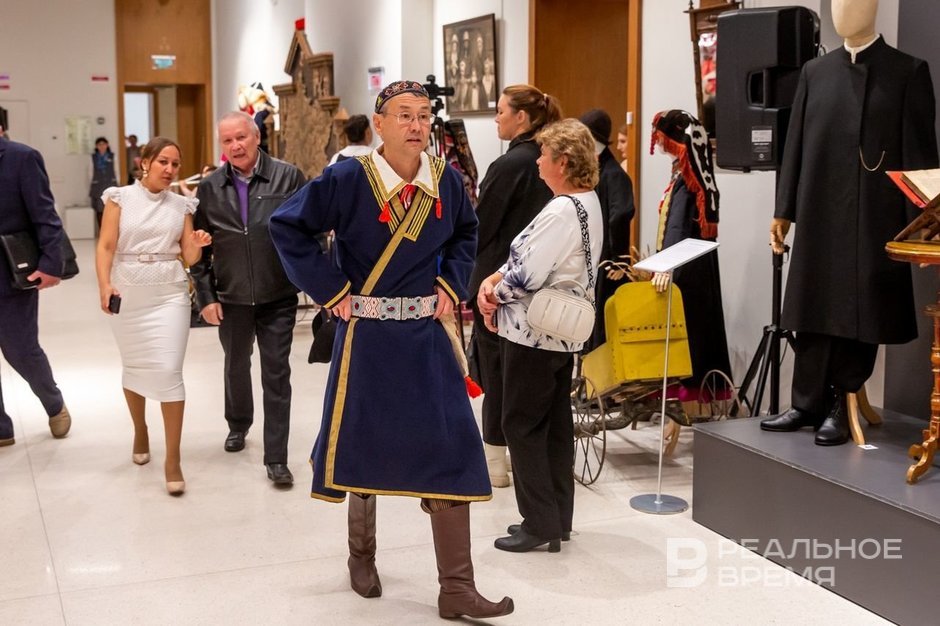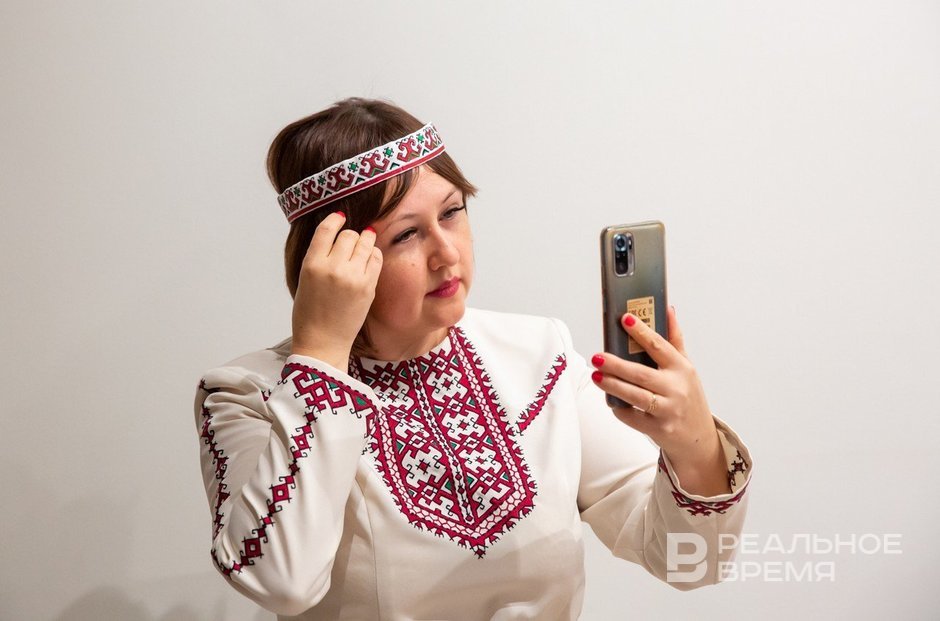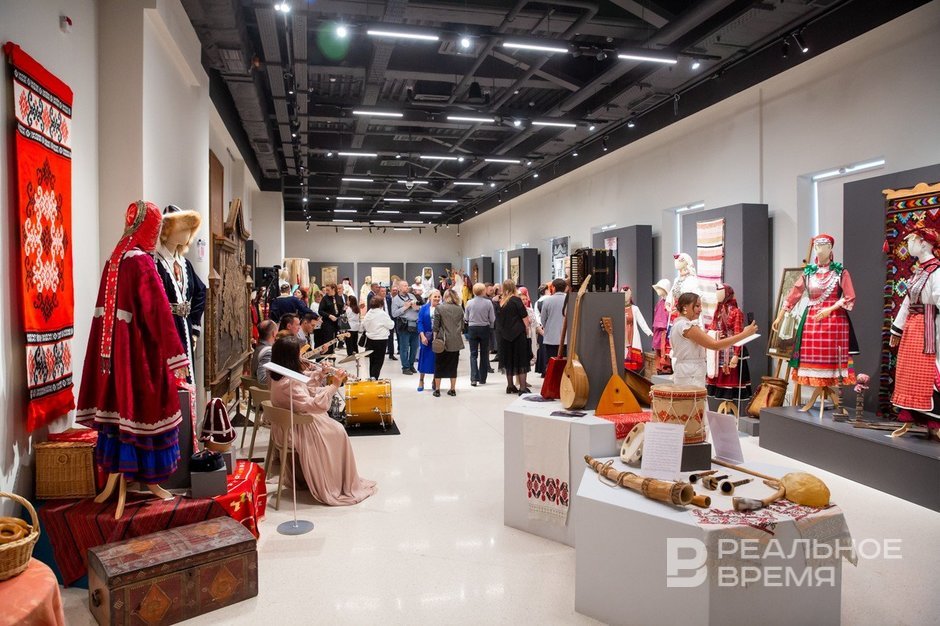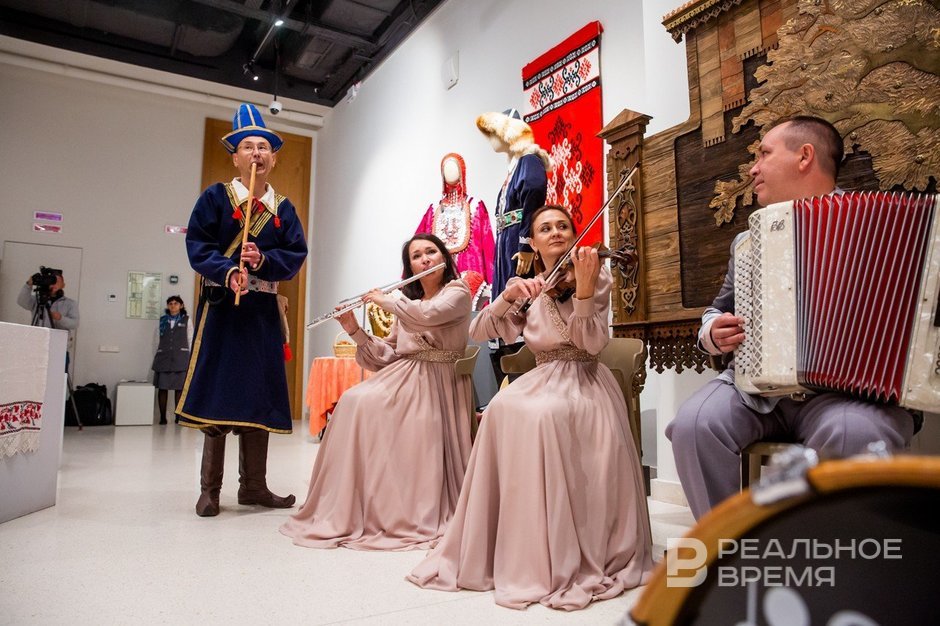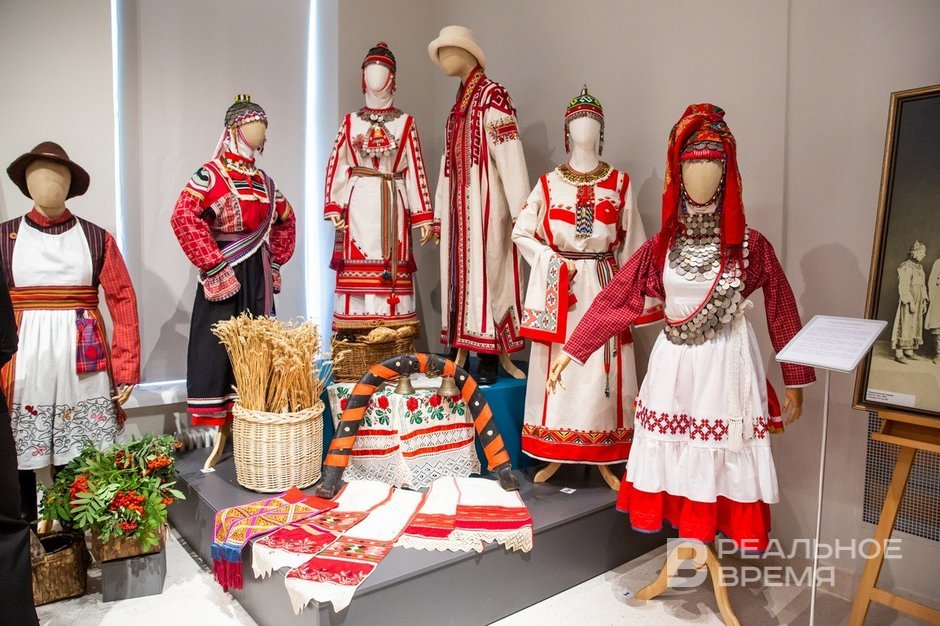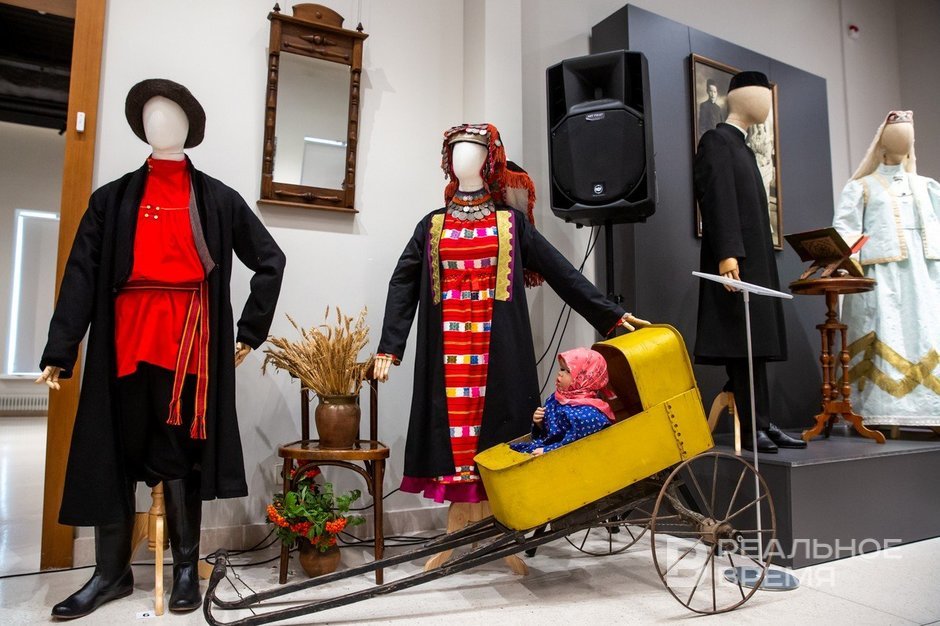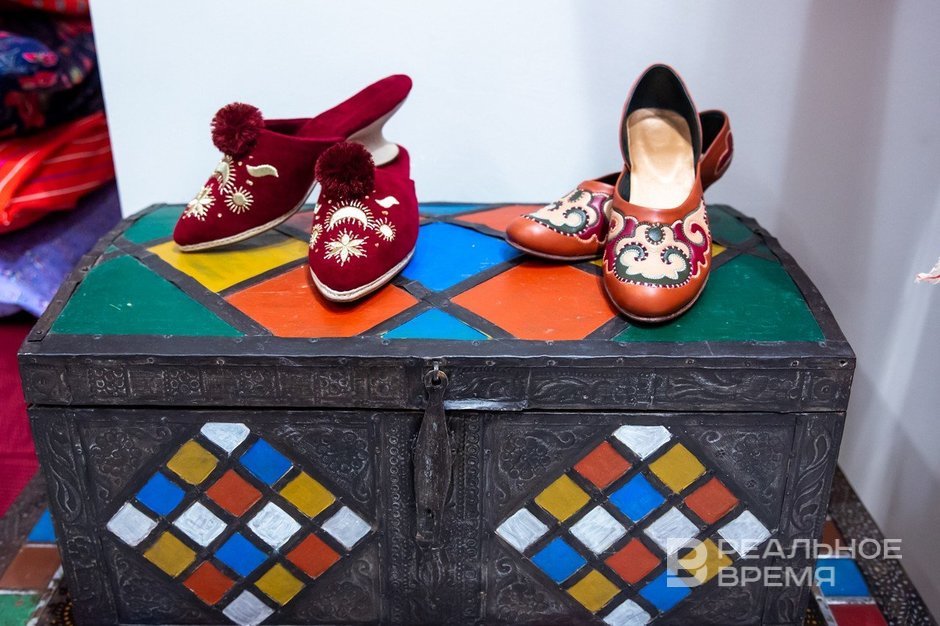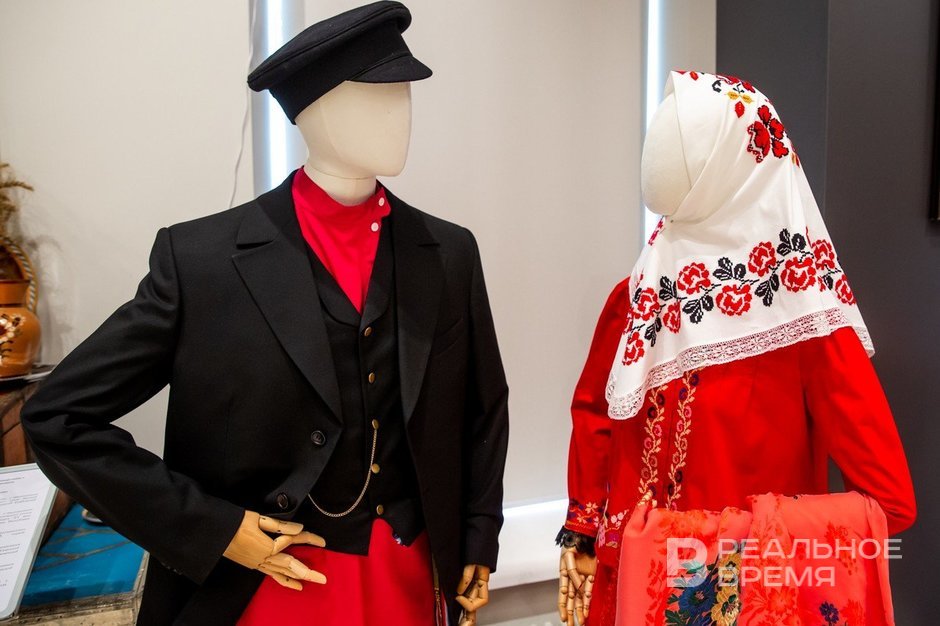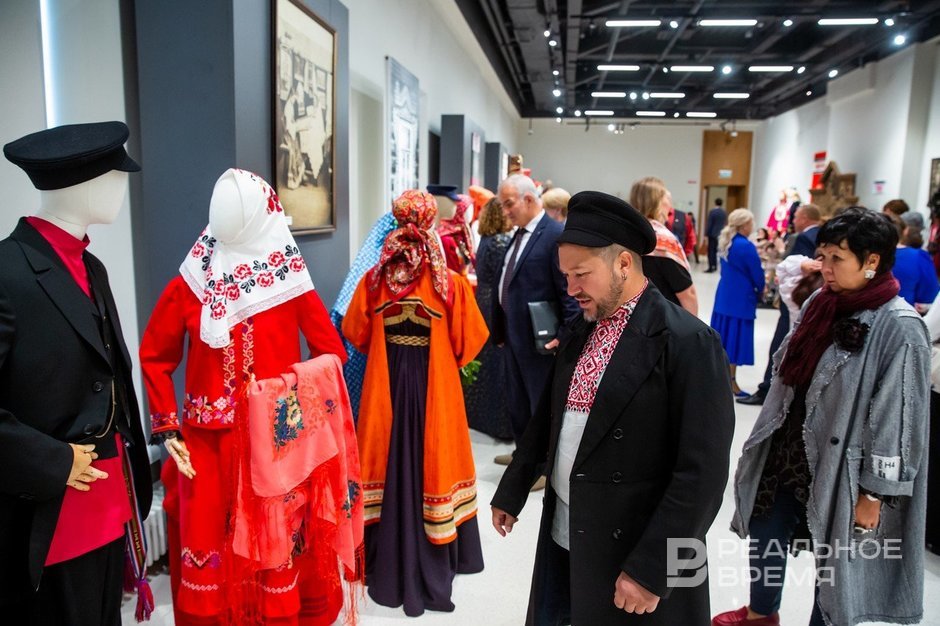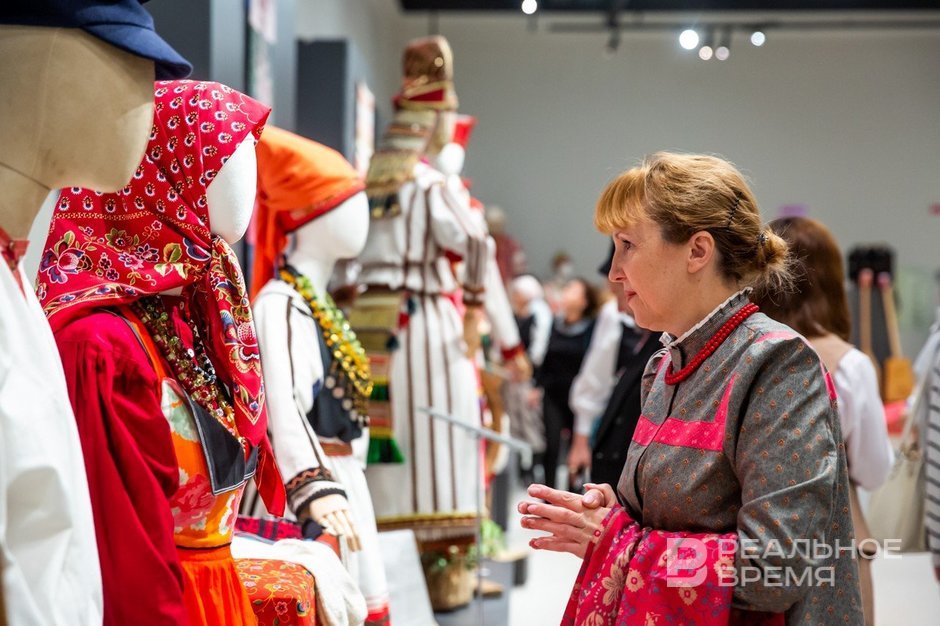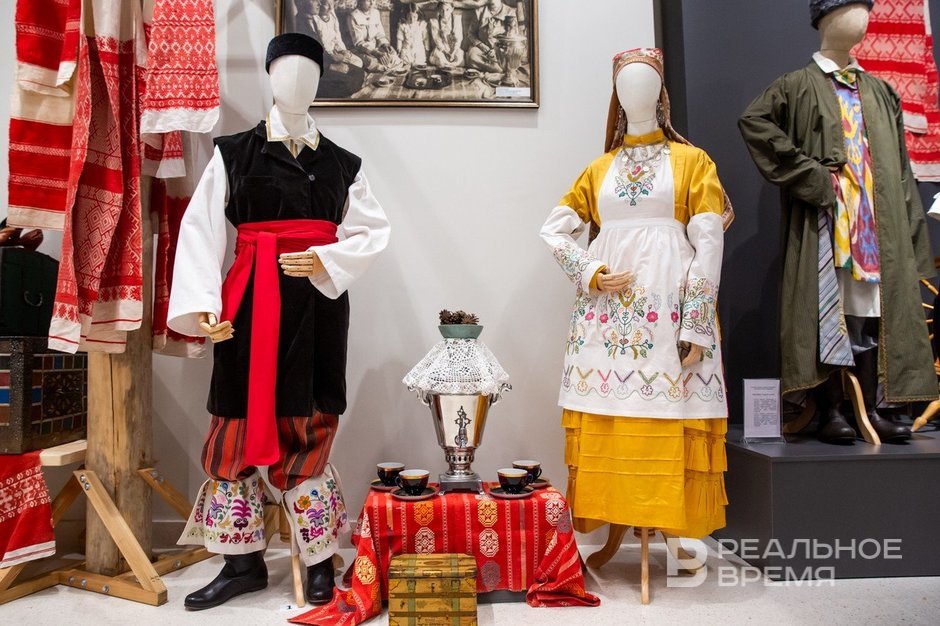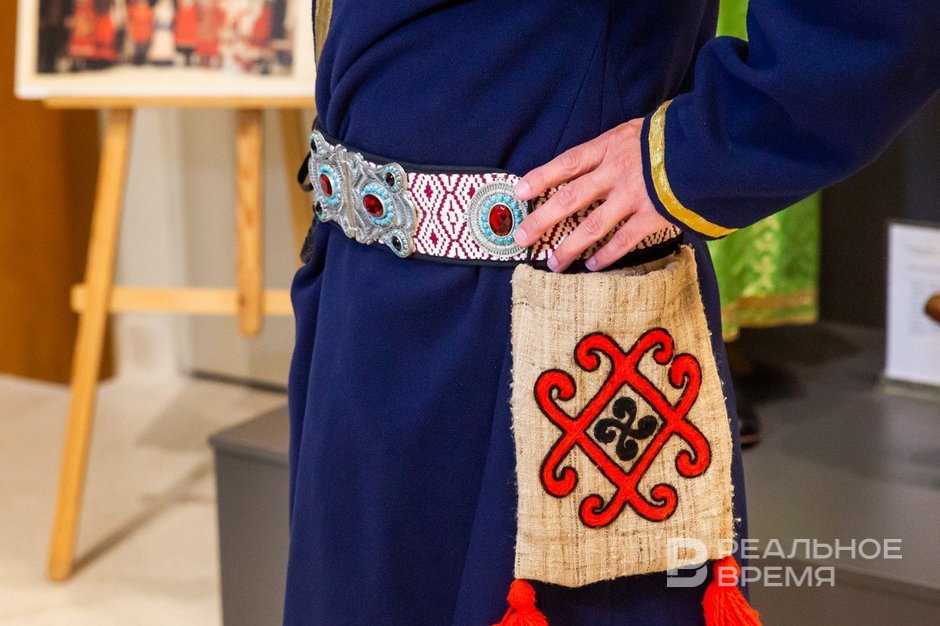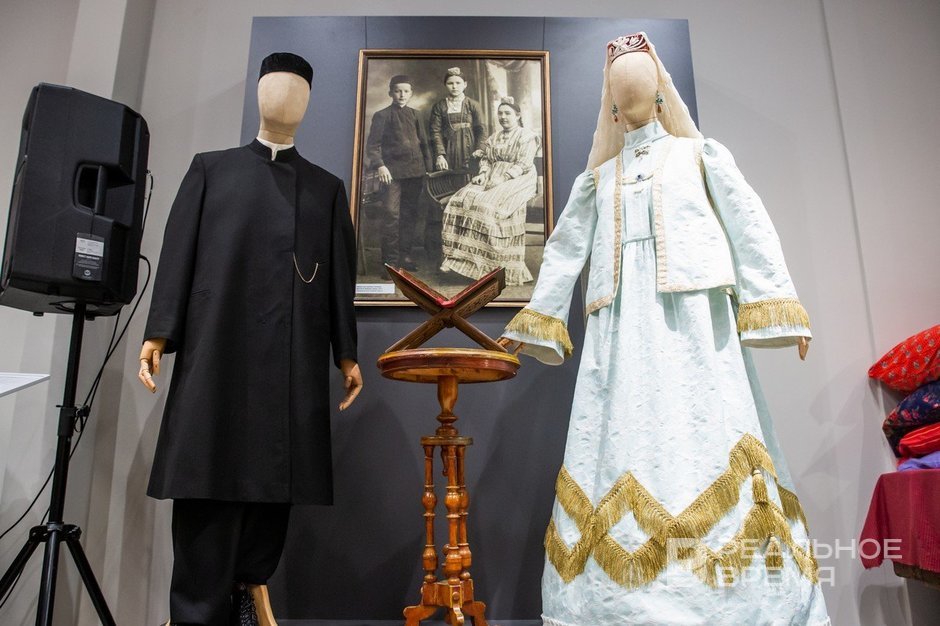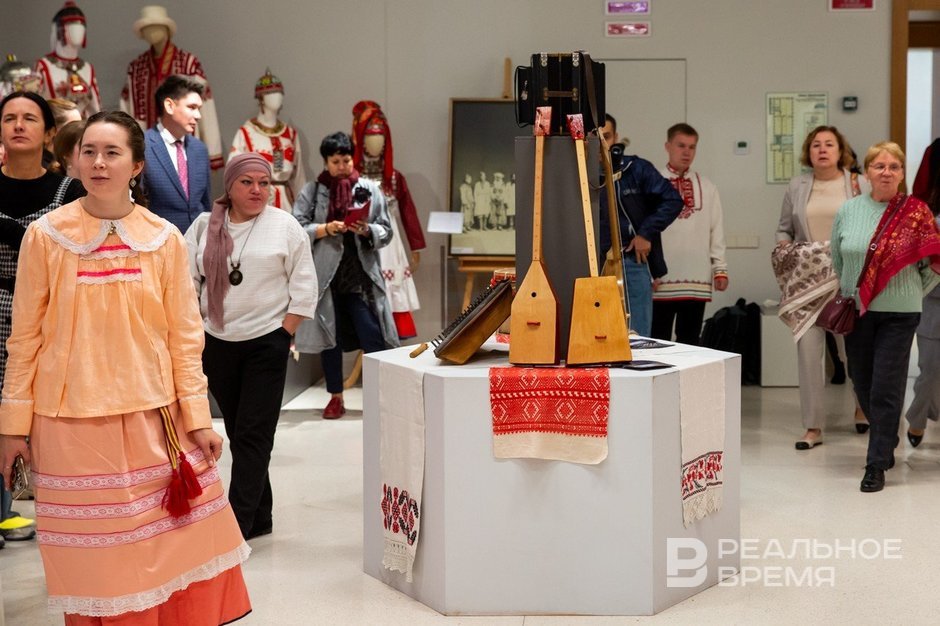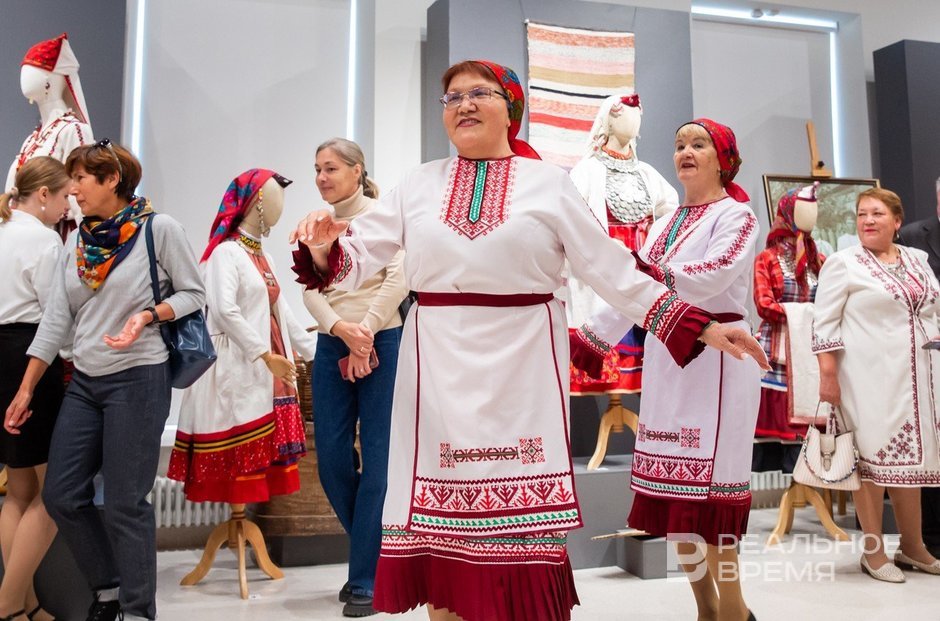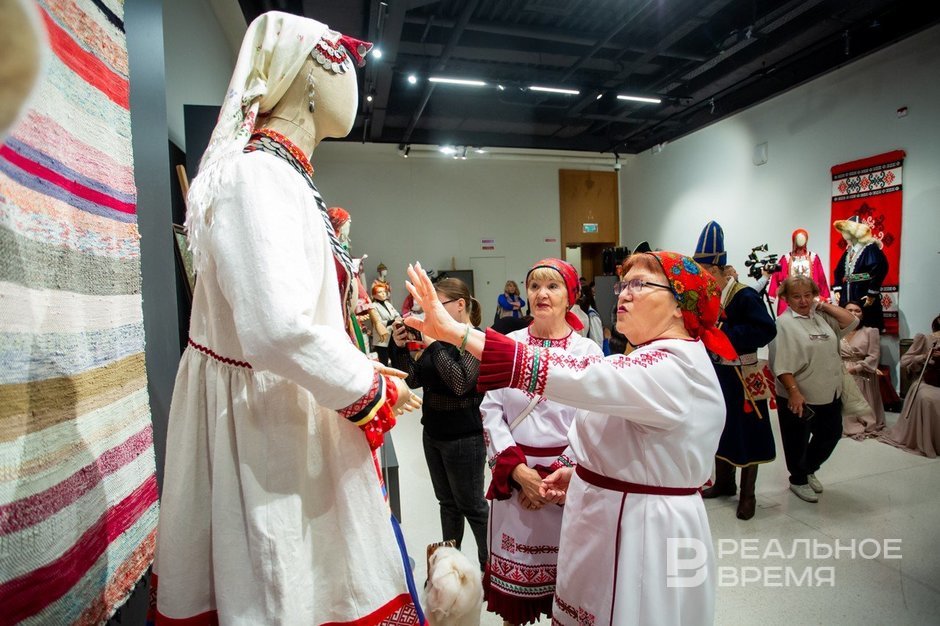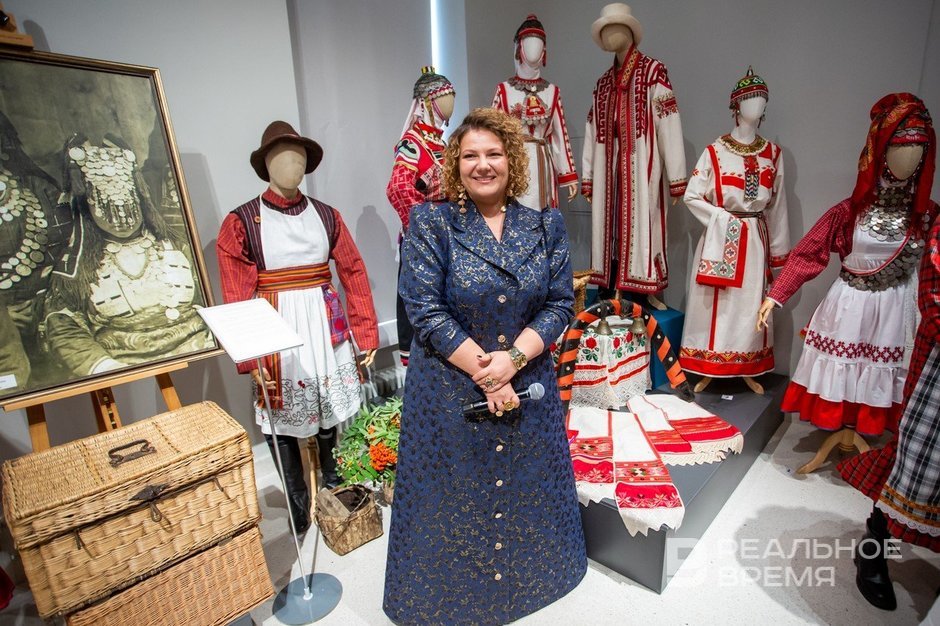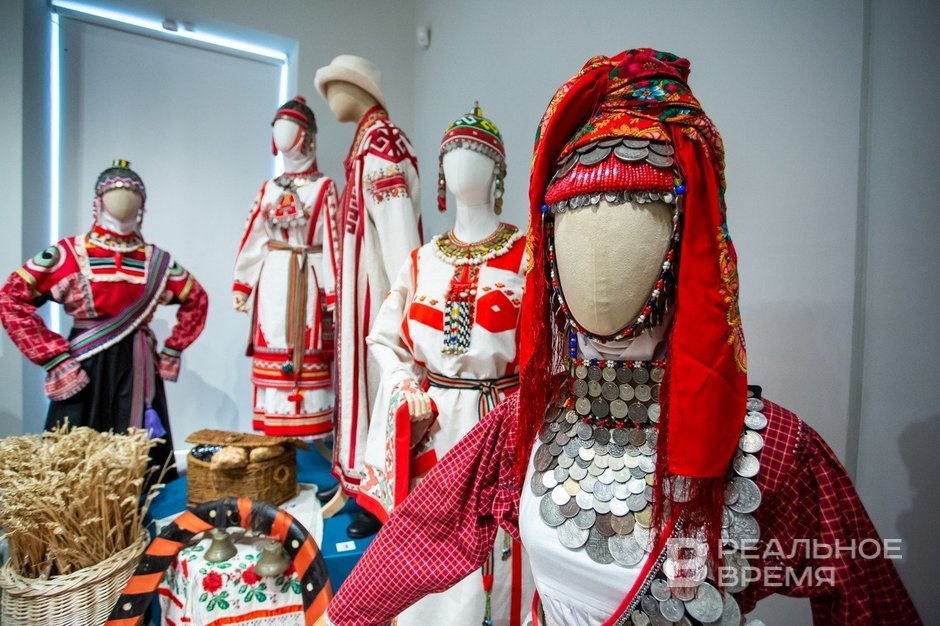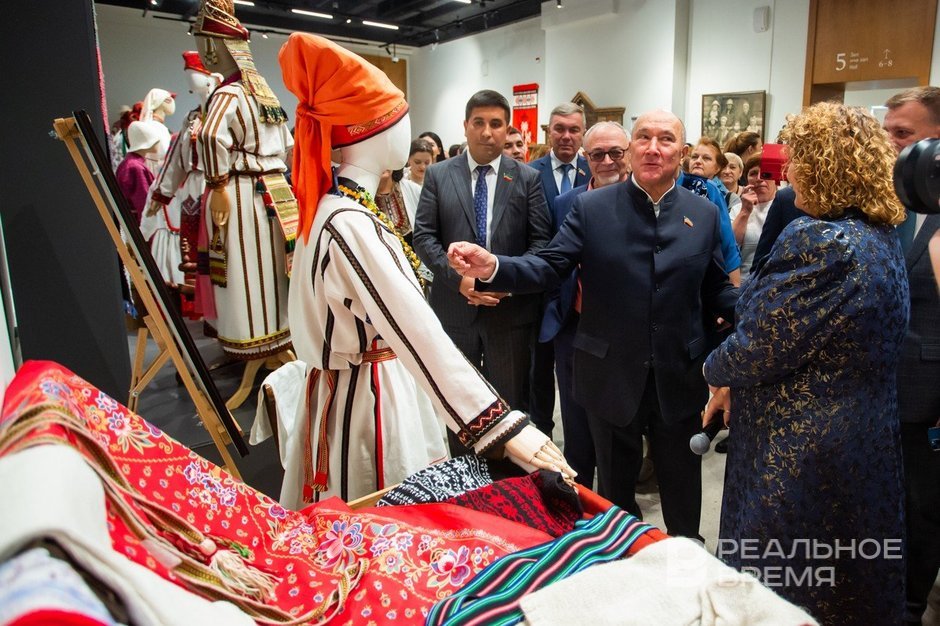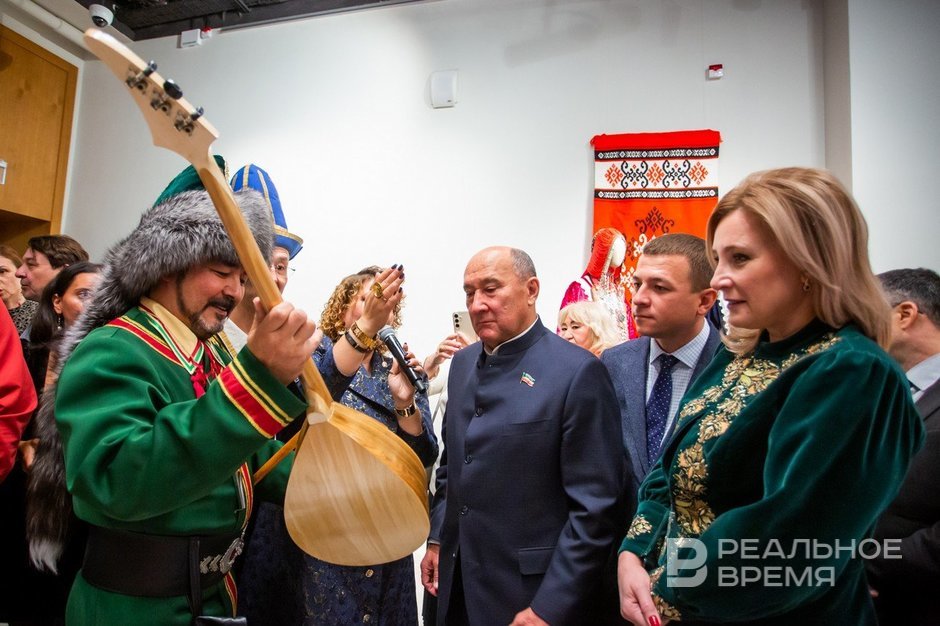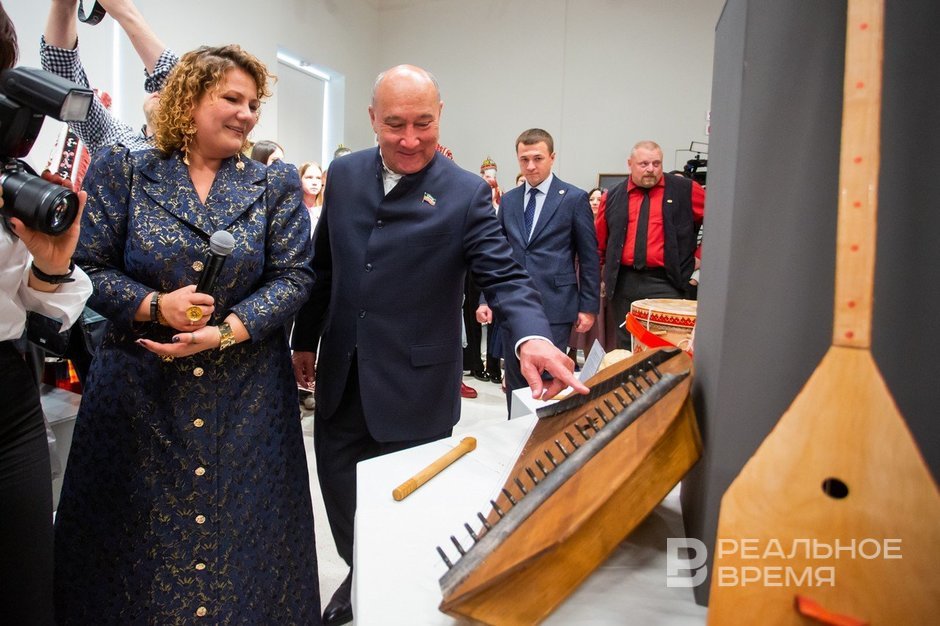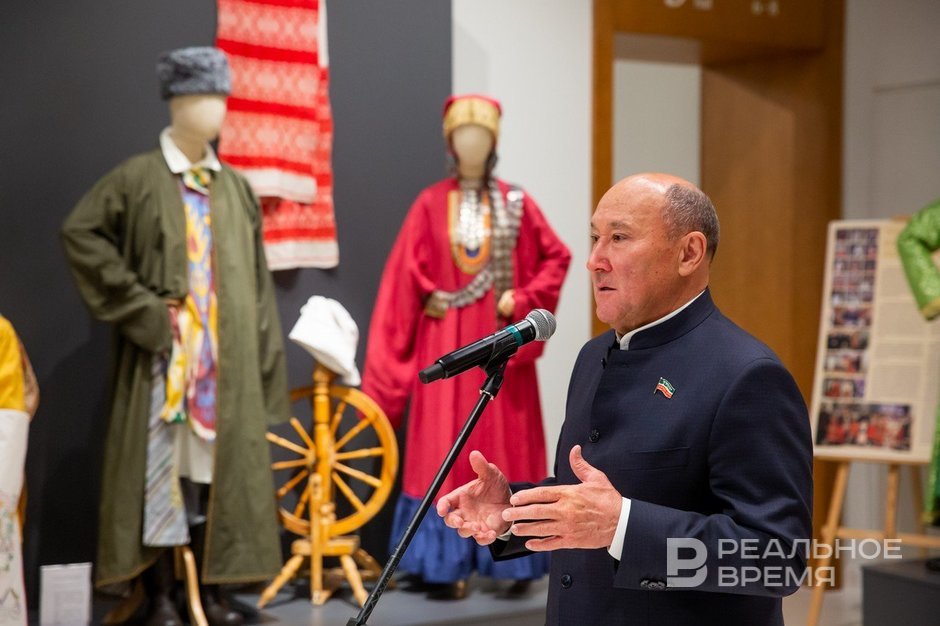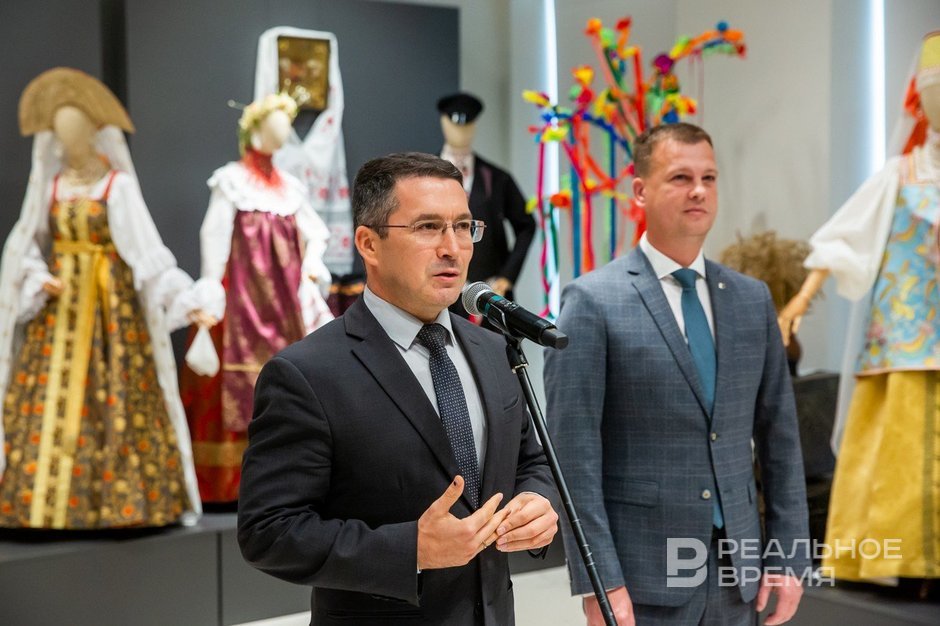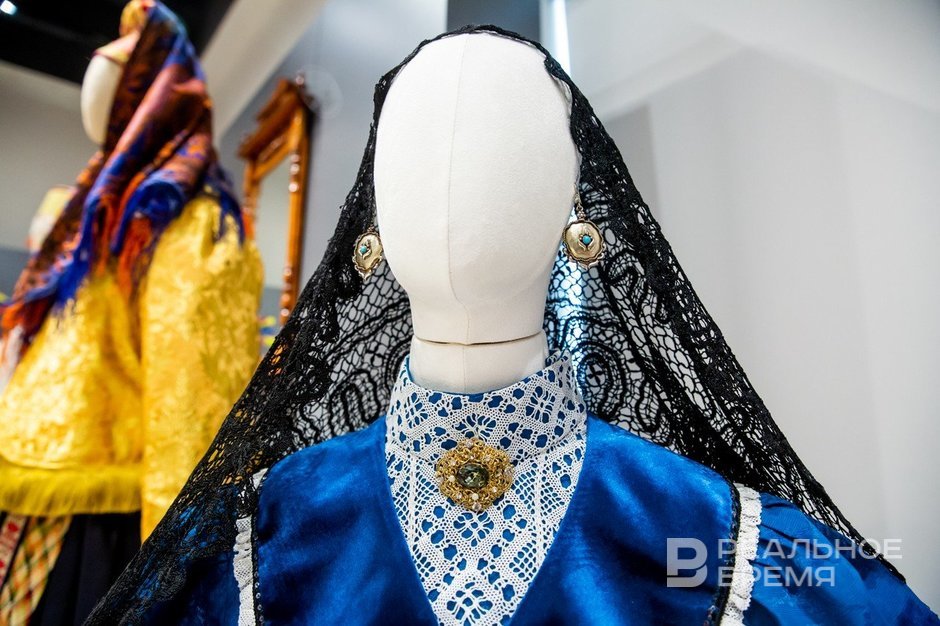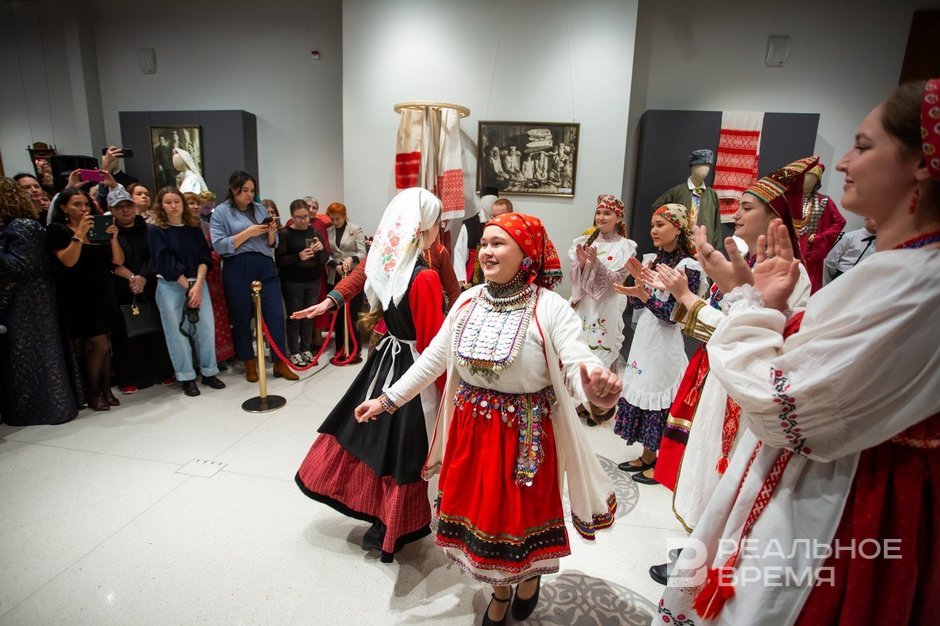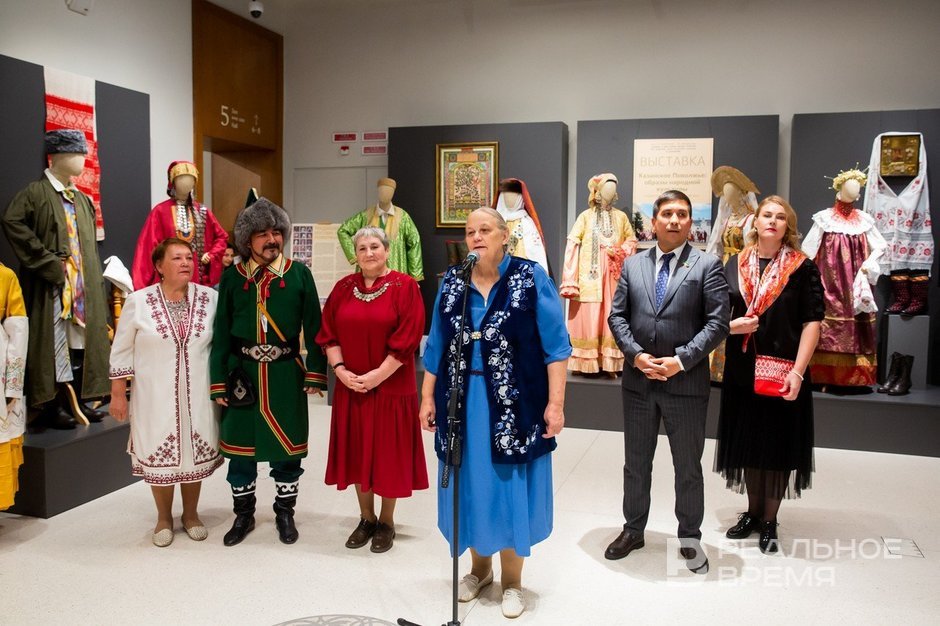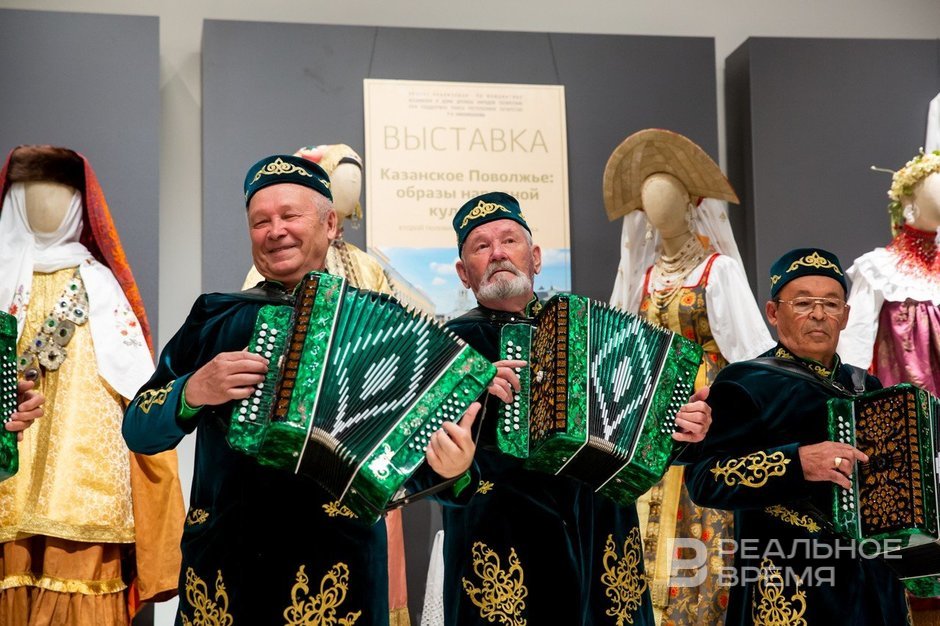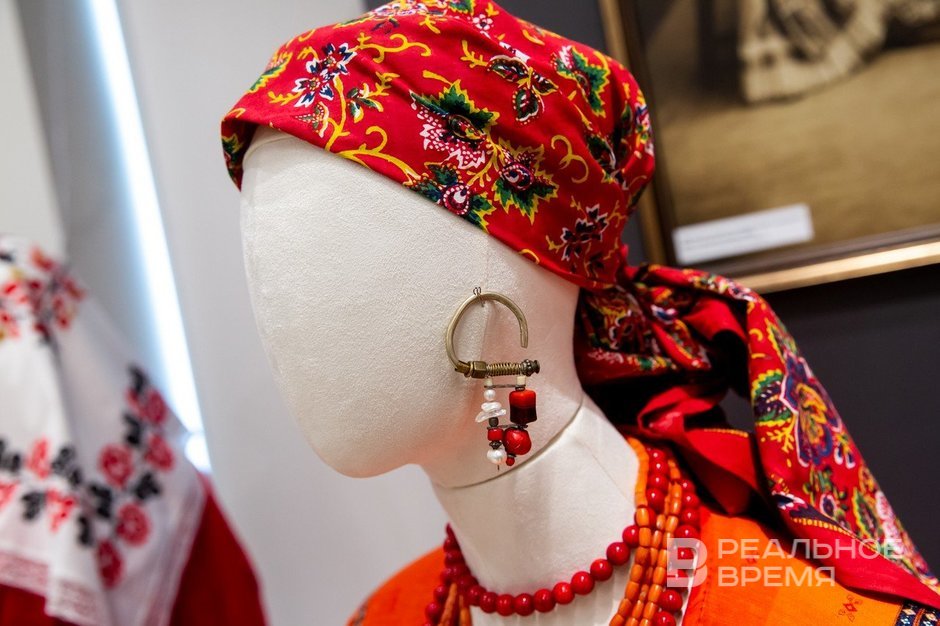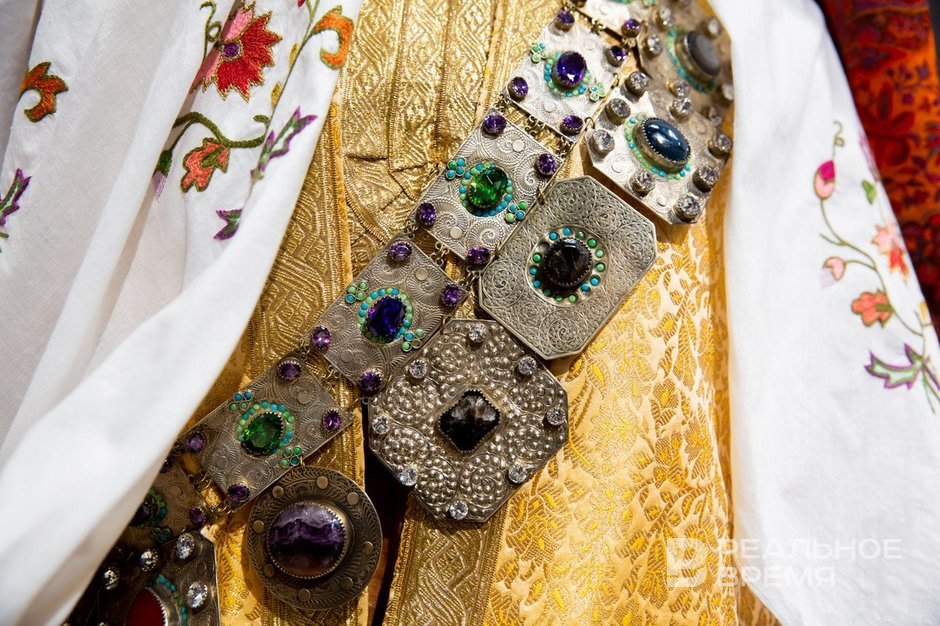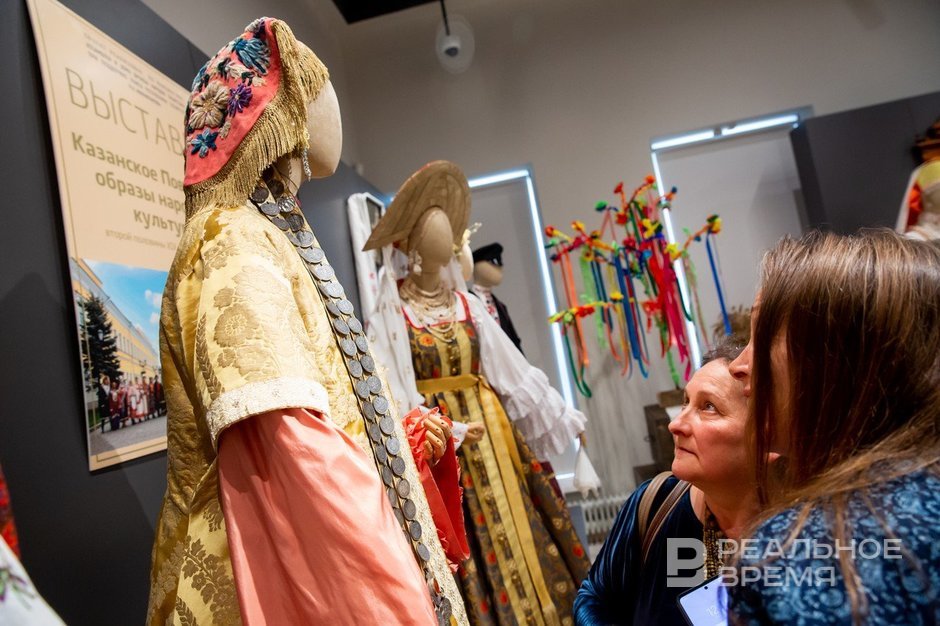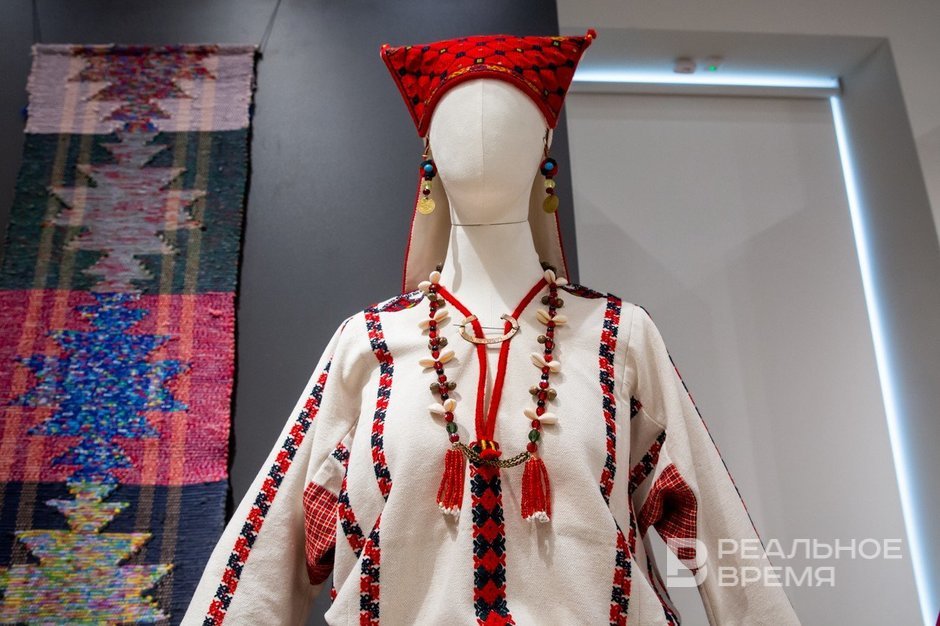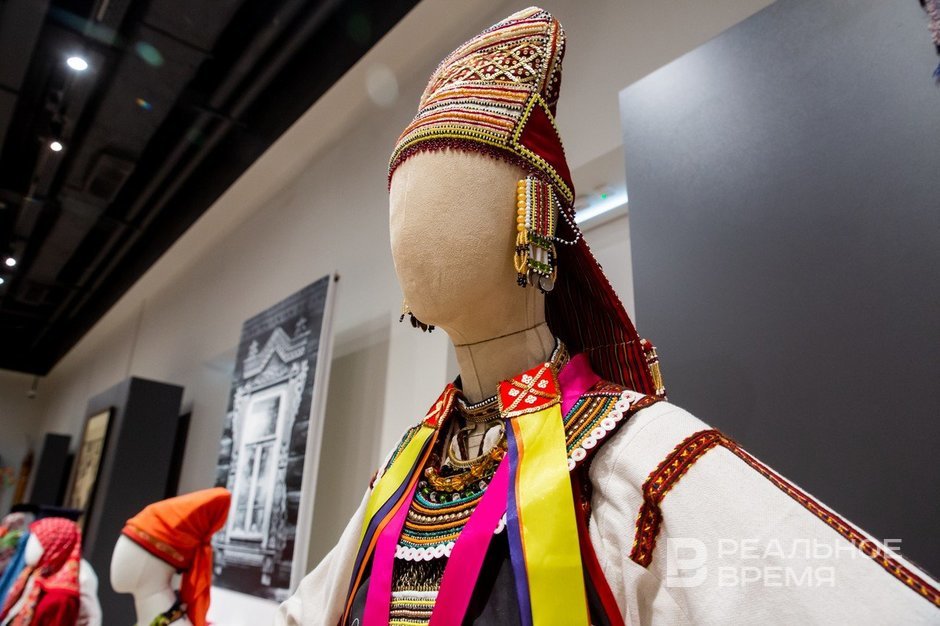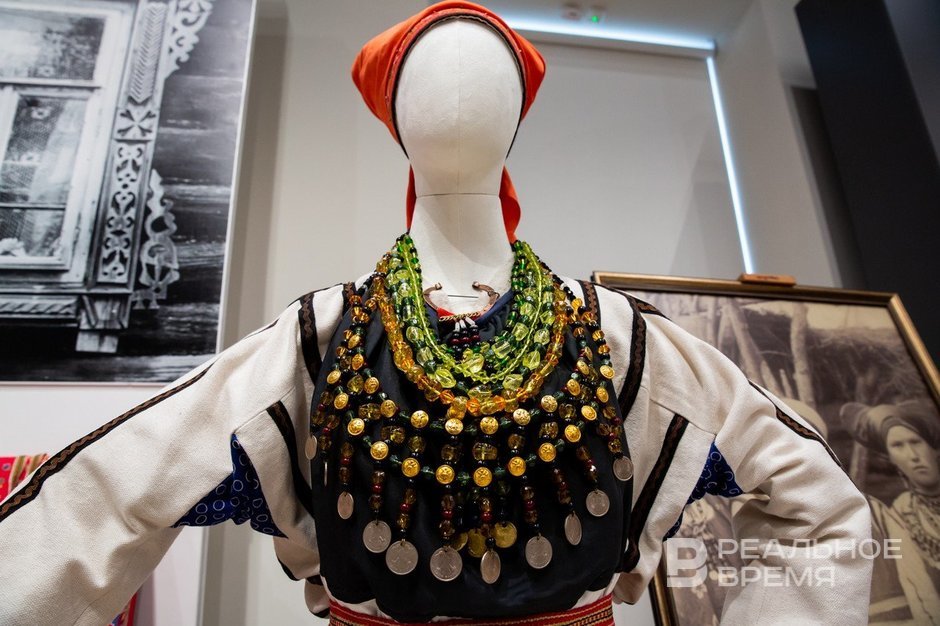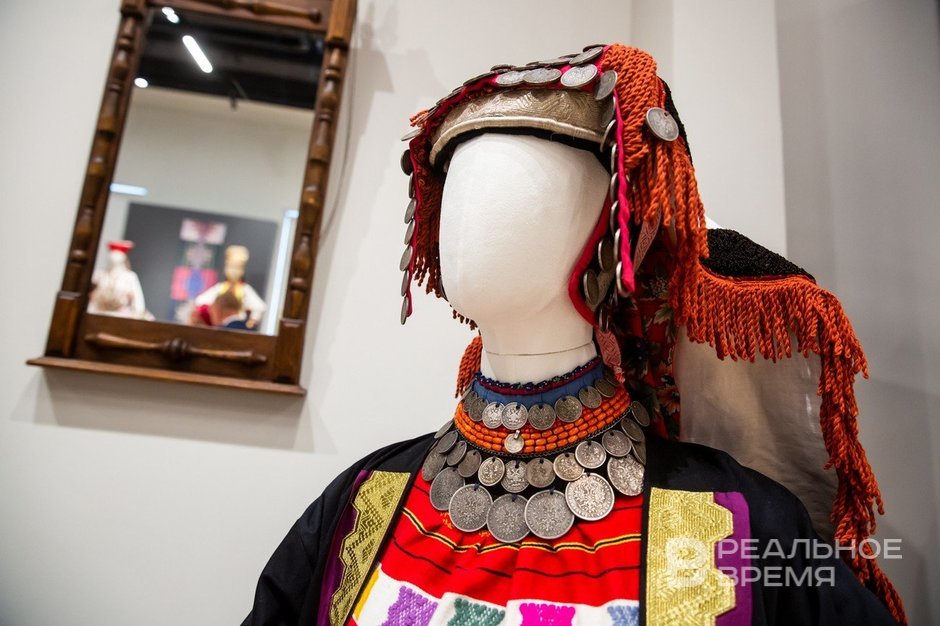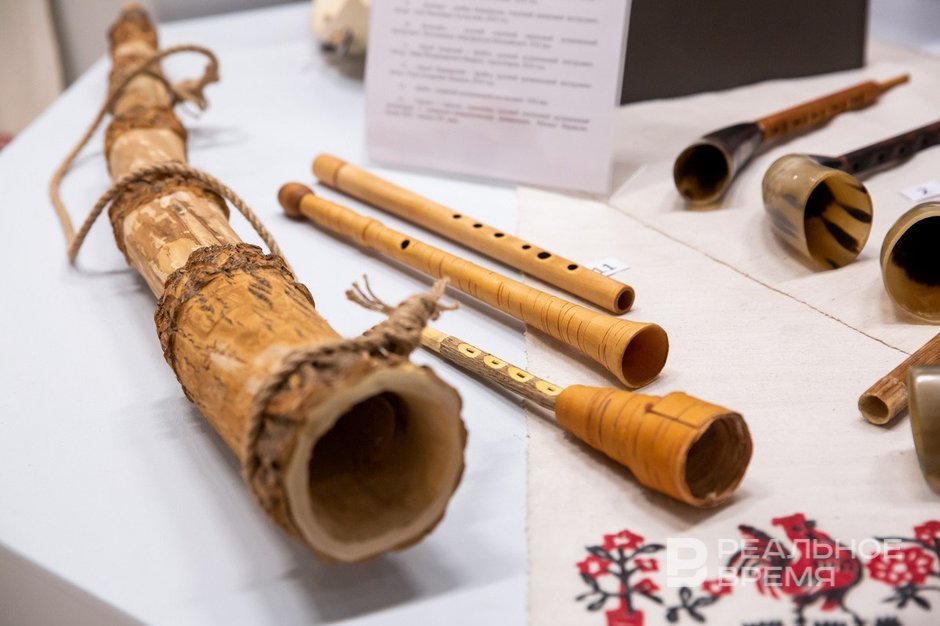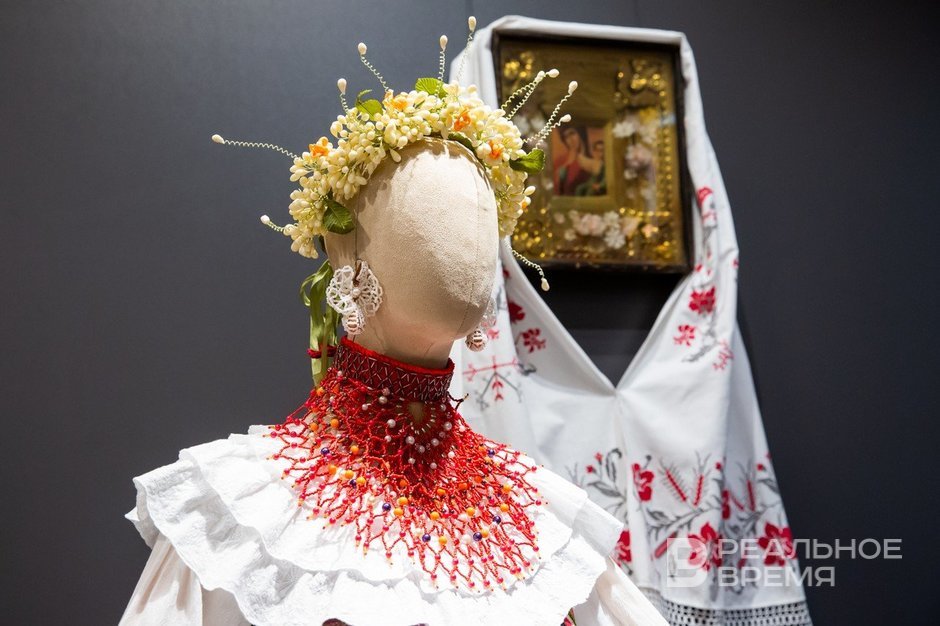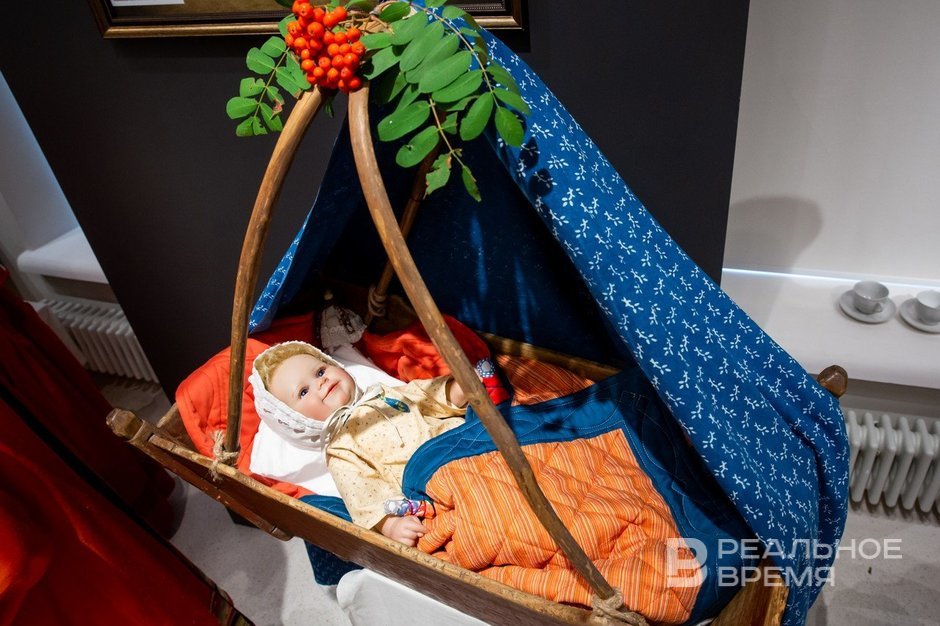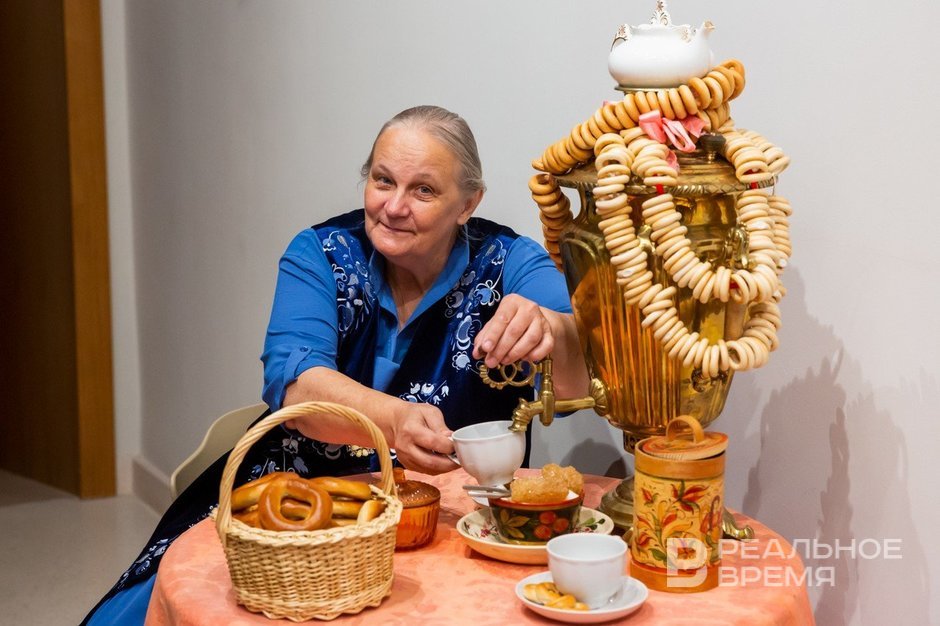The Kazan Kremlin shows 44 costumes of Volga peoples
The organisers of the exhibition are preparing a catalogue and patterns of national costumes
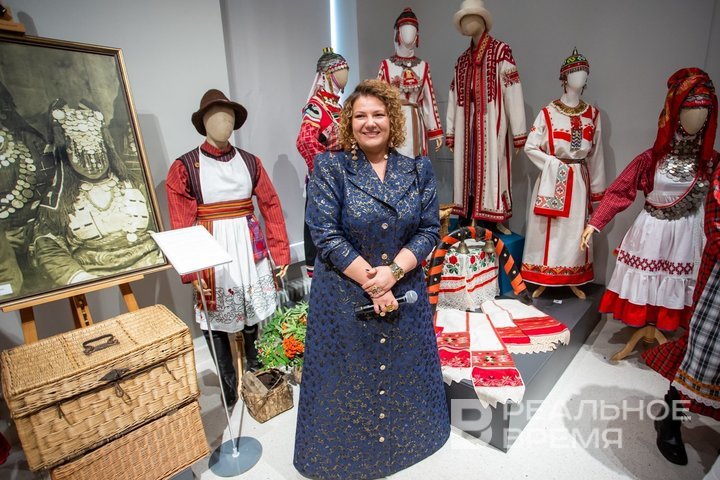
An updated exposition of Kazan Volga Region: Images of Folk Culture exhibition was opened in the Public Offices of the Kazan Kremlin Museum-Reserve. Another 15 national costumes were added to the existing 29 recreated costume complexes of the Volga peoples. The organisers plan to present patterns of these dresses that will be available to everyone.
Another fifteen
The first exhibition of costumes of Volga peoples was open from 30 August 2023 to 25 March 2024 when 45 museums took part in the project. The exhibition was presented to Rais of the Republic Rustam Minnikhanov, after which the project was presented in the Federation Council of Russia and at the 4th Unique Russia art and industrial exhibition-forum at the Guest Courtyard.
This time, over 100 museums joined the work on updating the exhibition. Specialists recreated costumes after studying funds of republican museums, and not only regional and municipal, but also rural, school, at cultural centres and private collections. For example, in Agryz District, researchers first visited a local museum of the history of cultural heritage (with a branch in the village of Izh-Bobya), and then the museum at Varkled-Bodyinsky rural club, studied the collection of the Tretyakov family from the village of Kulegash.
Based on the research, 44 costumes were obtained — all these outfits were worn by Russians, Tatars, Bashkirs, Mari, Erzya, Moksha, Udmurts, Chuvashes who lived on the territory of modern Tatarstan in the second half of the 19th and the first half of the 20th centuries. The exposition was also supplemented with folk musical instruments and household items.
The highlight of the exhibition is that many things — clothes, jewellery, accessories — are handmade based on surviving museum exhibits and private collections.
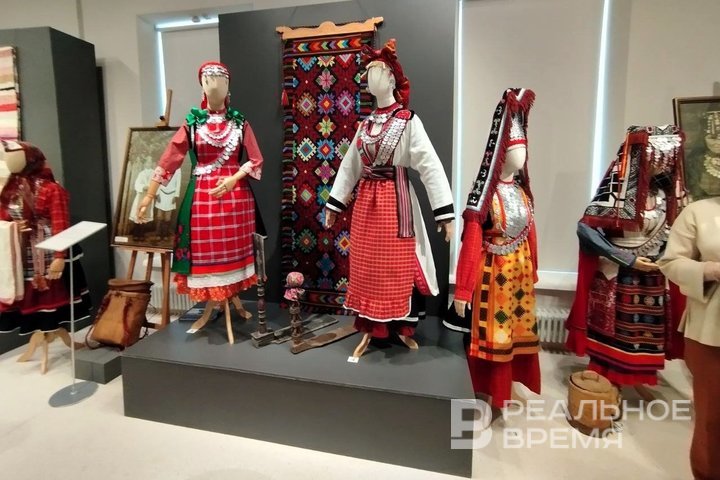
The project is being carried out by the Assembly and the House of Friendship of the Peoples of Tatarstan, which can explain why the relatively small hall in the first entrance of the Public Offices was filled to capacity. Moreover, many guests themselves came in the folk costumes of their ancestors. There were also other partners of the exhibition — the Resource Centre for the Implementation of Innovations and Preservation of Traditions in the Sphere of Culture of the Republic of Tatarstan, two cultural centres — named after Pushkin and Yemelyanov, as well as the Ibragimov Institute of Language, Literature and Art.
Before the official opening of the exhibition, the delegation of distinguished guests headed by Deputy Chairman of the State Council of the Republic of Tatarstan Marat Akhmetov was shown around the exhibition by scientific director of the project Elena Gushchina who began her speech with a life-affirming record: the creators of the exhibition travelled more than 20,000 kilometres in their search.
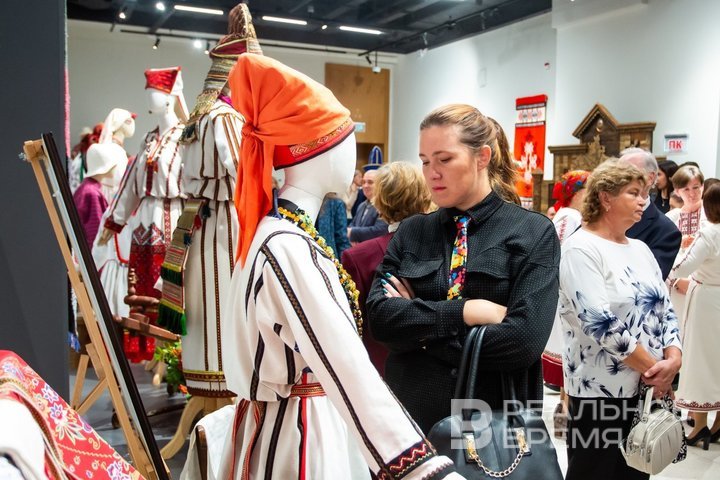
The speaker noted that people continued to use, change and “refine” folk dresses stored in private collections and museums at rural community centres: hence coins of the USSR and the Russian Federation, medals, tokens on headdresses and jewellery, replacement of worn-out frills, satin ribbons and braid.
“A meticulous, colossal work was done,” admired Vice-Speaker of the State Council of the Republic of Tatarstan Marat Akhmetov. “Each pattern, each embroidery has certain meanings. For a mere mortal, it is simply beautiful, good, maybe, they say, it can be done better today, but the historical value of these things is very high!”
“We must treat this very carefully,” summed up Akhmetov, “each element reflects a certain meaning, character, way of life of the period, locality, nationalities. Through this, we carry out targeted work to unite our multinational people.”
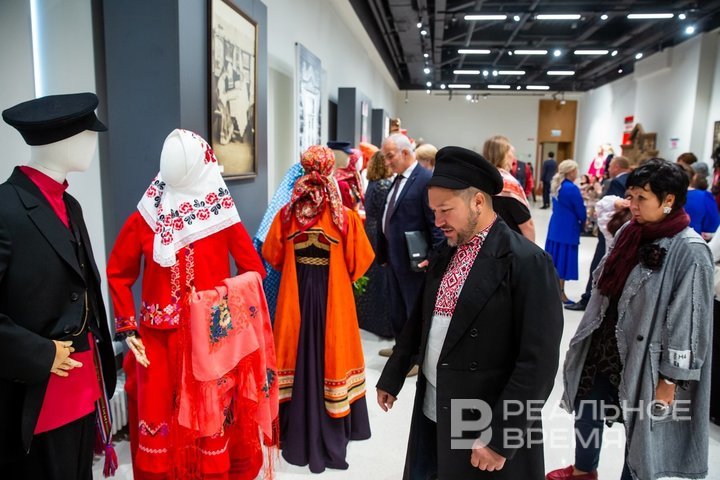
Find, explore, recreate
A large team worked on each national group of costumes. For example, Kazan brands Millihasite, Sakhtian, as well as, for example, Artel Udmurt centre of crafts and tourism took part in the recreation of Tatar costumes.
One of the project consultants was Pavel Alexandrov, a specialist in creative genres at the Yemelyanov Cultural Centre (also known as musician Shoner Paul). At the first stage, he supervised the unit for recreating the clothing of the Finno-Ugric peoples of the republic and at the second, he worked on Udmurt costumes.
“For example, the male Mordvin costume turned out to be a composite one, because it had already been lost,” Alexandrov notes, especially highlighting the work of the collector of traditional Mordvin clothing from Saransk, art historian Tatyana Prokina, who recreated the headdress of the Tetyush Moksha (chichera) with her daughter.
Men's costumes found in museum collections are a great rarity. Therefore, Alexandrov noted the importance of recreating one among Shoshminsky Udmurts, while working on which he himself discovered that the tambour stitch is common not only among the Tatars, but also among the local Udmurts. Among the new items at the exhibition is the festive women's costume Bavly group of southern Udmurts, with a Pavlovo Posad kerchief on his head. You can see quite a few similar intersections of cultures at the exhibition.
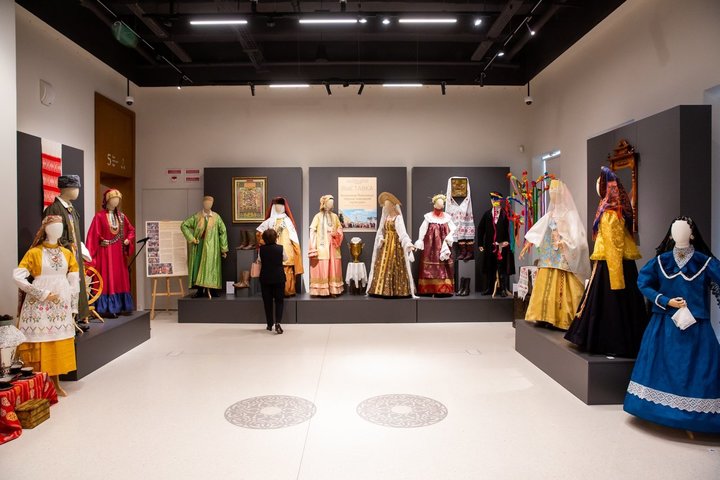
For example, in the second half of the 19th century and before the revolution, motley, homespun coloured canvas with a striped pattern made from the remains of yarn of various types (wool, flax, cotton) and colours was popular.
“Because it is bright, beautiful, festive, it is fashionable. A costume is a language that tells one about a person, about the time in which he lives. It is very important that now we show in different ways how this costume can be reproduced,” Gushchina summarised.
Alexandrov is proud that he managed to restore the takiya headdress with a braid, which was worn by the Udmurts in Baltasi District — now it has already been lost. The specialists studied the cut, the type of headdress, understood how it was attached, and now this entire “system” can be seen at the exhibition.
The fabrics were a big challenge for the specialists: some were made by hand, some were found in Soviet-era stockpiles, and some were purchased. But, of course, they did not use synthetics as a matter of principle.
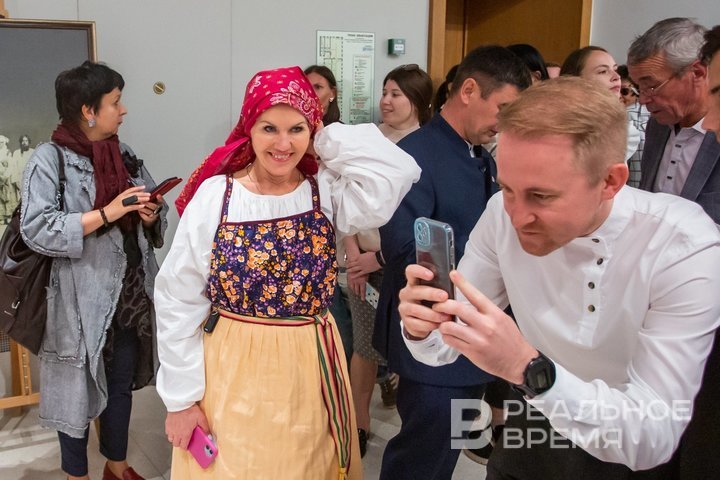
We are waiting for the patterns
“An updated catalogue is currently being prepared,” says one of the scientific consultants Dina Gatina-Shafikova pointing out that certain allowances had to be made for each costume. “It is the 21st century, and there are no such technological possibilities as there were before. For example, when making Tatar costumes, we purchased fabrics not only in Tatarstan but also in Uzbekistan and Europe. At the same time, we had to understand whether it corresponded to the era. It seems like the pattern is the same, but the time is already the middle of the last century. And Tatar jewellery was made by Bashkirs, and very well, these are complete replicas based on museum exhibits.”
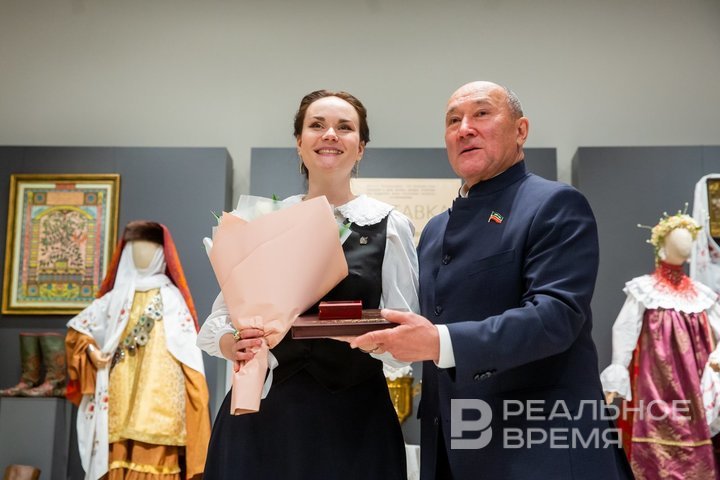
The organisers of the exhibition indicated that on the basis of the materials it is possible to create “scientifically substantiated and historically correct costumes” for creative ethnic and cultural ensembles. These works can also inspire modern designers.
